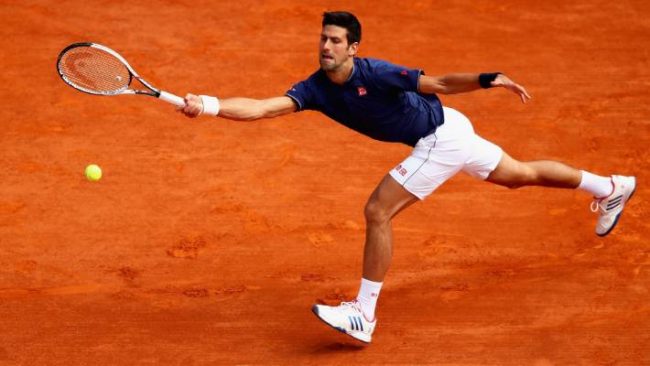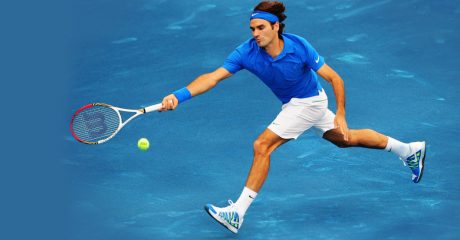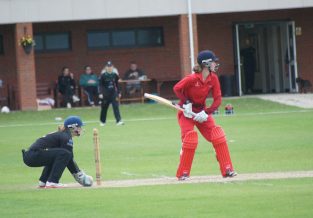The Evolution of Tennis and the Unfortunate Twist in the Story
Published on
05 Jul 2019


Written by
Kate Senini
Consultant Physiotherapist
Call us on: (03) 9975 4133
Wimbledon season is here! Kate Senini thinks back to the grass courts, the tennis whites, the Pimms, the strawberries. But Kate also considers the injuries that come with the modern game, and looks at how the evolution of tennis is creating new problems for the wrist and elbow.
The injuries that occur from an individual sport that has a much more gruelling impact on the whole body than we may realise from our spectator position; strawberries and cream in hand. Kate Senini considers the impact of wrist injuries in such a racquet sport that requires incredible strength, endurance, and flexibility. And on the changes to a great sport that has seen an increase in injury in modern times technology and technique as the ingredients to success. Yet science suggests that these factors have not necessarily been of benefit to the athlete.
The list of injury casualties in tennis is not a new phenomenon. The French Open three years ago saw an absent Raphael Nadal due to a wrist injury. And there have been many others.
A 2016 literature review in the Journal of Sports Medicine by Steulken et al entitled “Wrist Injuries in Tennis Players: A Narrative Review (https://link.springer.com/article/10.1007%2Fs40279-016-0630-x) studied injury rates over the previous two decades. The findings were that the wrist not only accounted for a greater proportion of overall injuries in the current decade, but that they are becoming more prevalent than traditional injuries such as shoulder or lower back. Comparisons between research articles carried out in the mid 80s and 90’s, to those carried out in 2015/2016 highlighted this change.
The article also cited that approximately 14% of all injuries in female tennis players were related to the wrist.
With the significant advances in biomechanical knowledge, strength and conditioning, refinement of technique, and off court preparation, should we expect to see a decline in injury rates?
Given this is not the case then the burning question is what has happened in the modern game?
Changes in the Modern Tennis Game
Modern Tennis has seen the increase in power, and more court play focused on the baseline with big hitting ground stokes. The technology of the racquet, the strings, the balls, and court surfaces have seen a rapid increase in ball speed.

Technique has pushed toward a double handed backhand, rather than the previous single handed backhand in the era of the wooden racquet. Evidence in the literature suggests that the double handed backhand alters the loads experienced at the wrist joint, thus pre disposing an increase in force through the wrist joint. This coupled with the greater speed of the ball hitting the racquet face at the point of contact means the forces absorbed and controlled by the wrist have greatly increased over the years.
The number of tournaments has increased, and the volume of matches played has thus also increased. The relative ease of global travel has seen more players attending more tournaments, with less and less time for rest and recovery. There is further strong literature evidence that professional tennis players essentially develop chronic overuse injuries through the wrist and upper limb – which is directly related to the complex interactions between load, repetition, game volume, training volume, and less consideration for rest and recovery time.
An article by Tanabe (et al) entitled “A Three dimensional Analysis of the contributions of the upper limb joint movements to horizontal racquet head velocity at ball impact during tennis serving” (https://www.ncbi.nlm.nih.gov/pubmed/17933202?dopt=Abstract) noted that the position of the shoulder joint played an important role in optimising racquet head position to take the force of impact of the ball.
Another literature article by Stepian et al in 2011 entitled “The kinematics of trunk and upper extremities in the one handed and two handed backhand stroke” (https://www.ncbi.nlm.nih.gov/pubmed/23486650?dopt=Abstract) investigated the potential superiority of one technique over the other. The findings showed that a two handed backhand created higher rigidity of the upper limb and trunk versus a single handed backhand which demonstrated less rigidity of the upper limb. This questions the ability to absorb the force of the ball hitting the racquet face, with the double handed backhand creating more force through the wrist as less is able to be absorbed throughout the upper limb and trunk.
With the competitive nature of professional sport increasing, we are also seeing younger athletes performing higher volumes of overall training, both on and off court, in the quest to enhance their development and specialisation. The rapid increase in training loads, perhaps with less of the underlying foundations required for this, lead to earlier onset overuse injuries.
Several studies have investigated a younger cohort of up and coming athletes. Lynall RC et al investigated the collegiate population of tennis players in the USA with findings published in the British Journal of Sports Medicine (https://www.ncbi.nlm.nih.gov/entrez/query.fcgi?cmd=Retrieve&db=PubMed&dopt=Abstract&list_uids=26719502). The key finding from this article was an increase in injuries sustained during competition, yet a decrease in injury sustained in practice.
Kox et al also investigated the prevalence of injury to the young athletes with findings published in the British Journal of Sports Medicine in 2015. (https://www.ncbi.nlm.nih.gov/pubmed/25872521?dopt=Abstract) This study compared gymnasts with racquet sport athletes, and found good data to support a higher rate of injury in gymnasts but was inconclusive in athletes performing racquet sports. This indicates that there is still a big area for further study and questioning around the development of both young athletes.
Read the follow up to this article next week when Kate Senini discusses what we do from here.
About the Author
Kate Senini — Consultant Physiotherapist
Kate, who was a founding partner at Pure Physio in 2010, is now working exclusively in a clinical role. Helping people recover from injury and prevent future injuries has always been her true passion!


